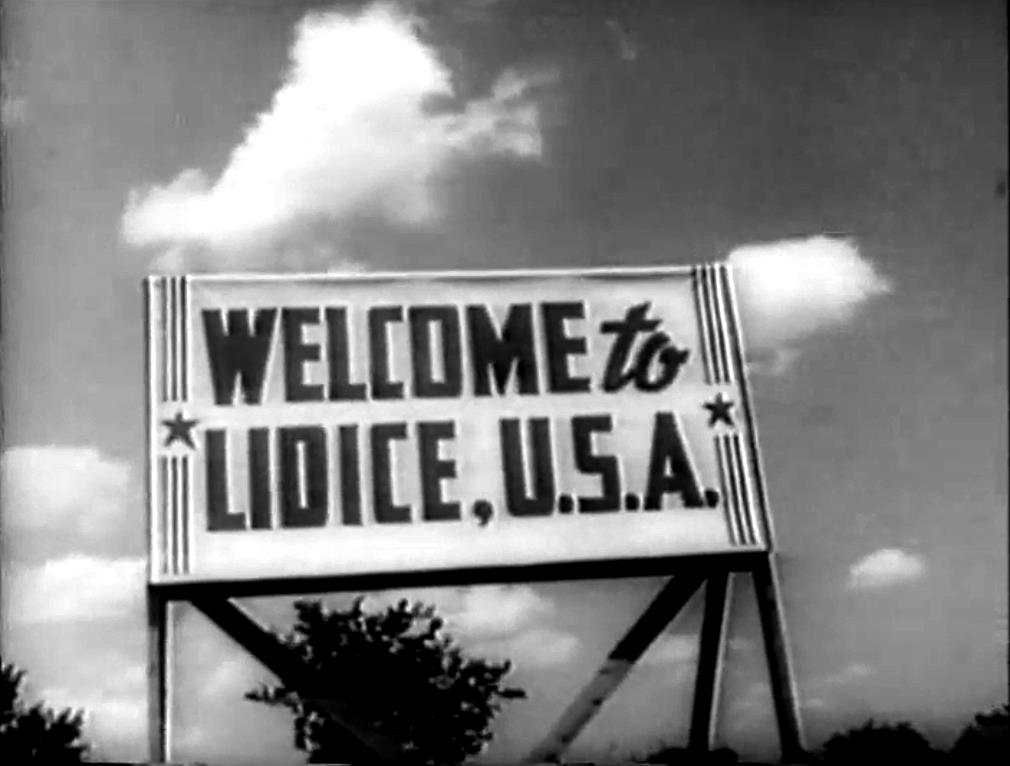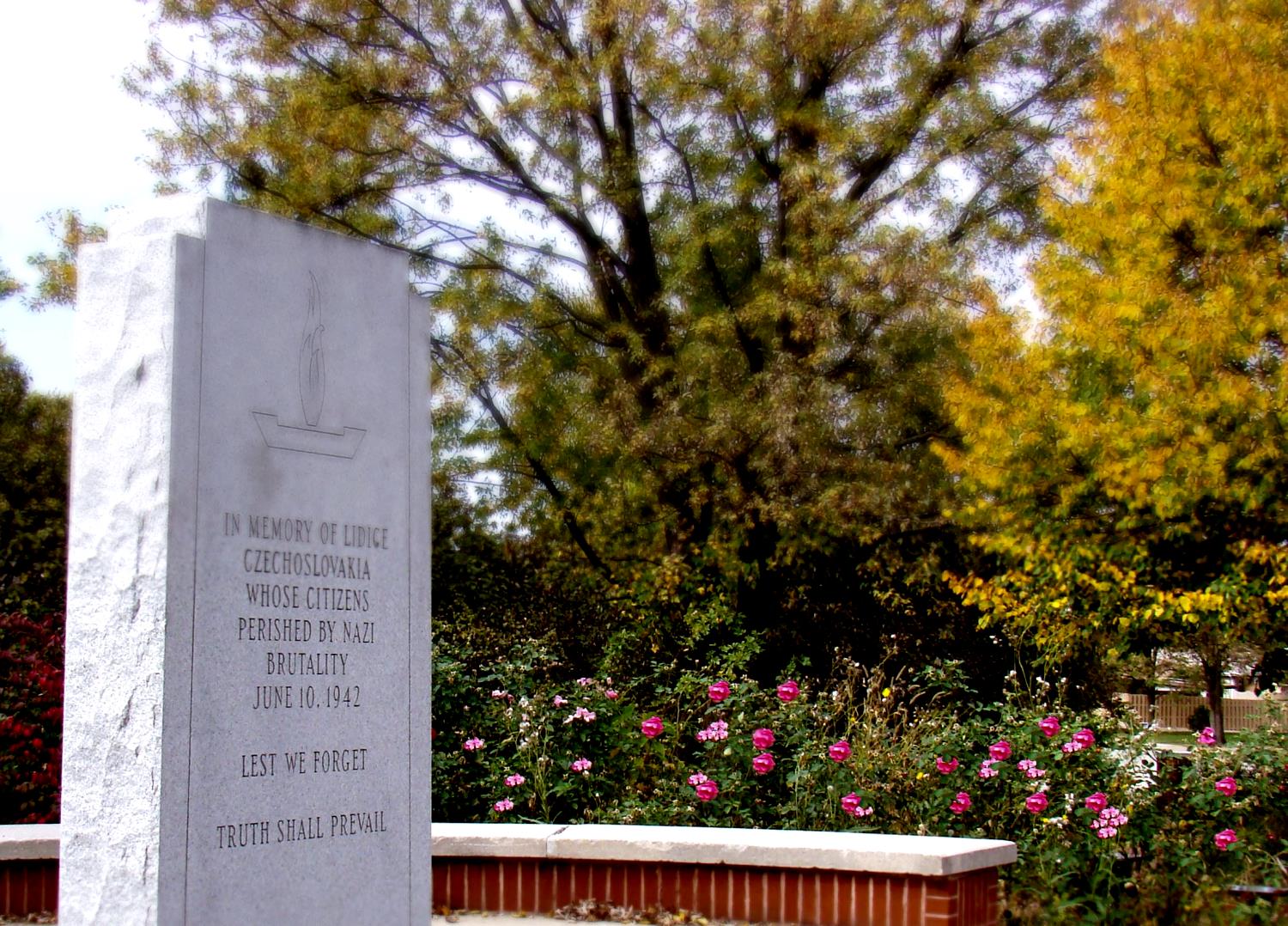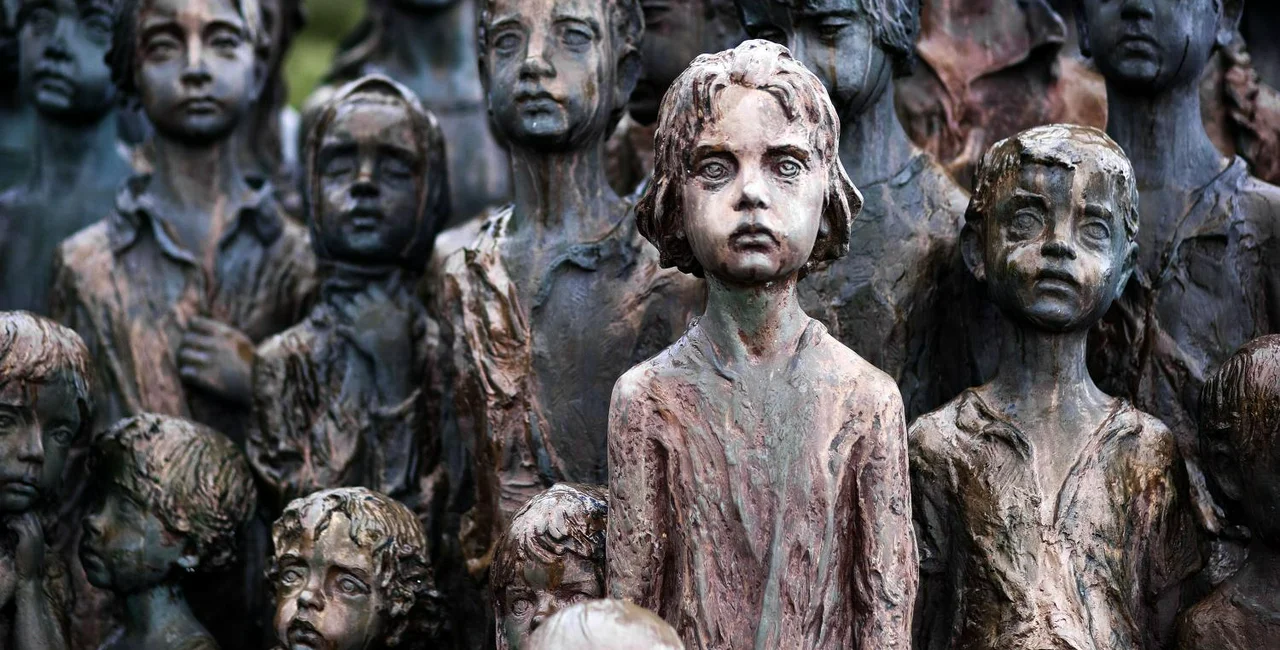The village of Lidice was destroyed June 10, 1942, in reprisal for the assassination of acting Reichsprotektor Reinhard Heydrich. The Nazis mistakenly believed that people in the town had assisted the Czechoslovak paratroopers who carried out the plan.
But soon after the news of the destruction, several towns in the Americas changed their names to make sure Lidice stayed on the map. A movement also began in Britain’s coal mining area to raise money to rebuild Lidice after the war.
From the village of Lidice, 22 kilometers northwest of Prague, 173 men over the age of 15 were shot, while most of the 203 women were taken to the Ravensbrück concentration camp. The majority of the 105 children were sent to work in factories in Poland, but a few were given to SS families to be “Germanized.”
The segment “Martyred Czech village lives again in U.S.” from a 1942 newsreel by United News recounts that a recently built development in the US state of Illinois was being named Lidice. It had been called Stern Park, but the name was changed just two days after the massacre. The area is now part of Crest Hill, Illinois, a suburb of Joliet.
A large ceremony took place July 12, 1942, to celebrate the renaming. Politicians, people in traditional Bohemian dress and an honor guard attended.
“Here in this new model township in middle America, people who love liberty, many of them Americans of Czechoslovakian ancestry, gathered to perpetuate the name of the martyred village. With patriotic and religious ceremonies banned in the Old World these days, they dedicate a memorial bearing liberty’s eternal flame, voicing their remembrance in Czechoslovakia’s national anthem,” the narrator states.

Czechoslovak President-in-Exile Edvard Beneš visited to lay a wreath at the flaming monument. He does not appear in the newsreel coverage.
A large crowd of people can be seen with American flags in front of detached suburban homes. The clip ends with people singing “Kde domov můj” (Where My Home Is) and shots of an inscribed stone tablet with a flame at the base. Images from the same newsreel with different narration, in Russian, were reused in a Soviet newsreel.
A separate newsreel clip from Pathe Gazette shows the 1940 Republican presidential candidate Wendell Wilkie giving a speech at the renaming of Stern Park. “Let us here highly resolve that the memory of this little village of Bohemia, now resurrected by the people of a little village in Illinois, will fire us, now and until the battle is over, with the iron resolution that the madness of tyrants must perish from the earth, so that the earth may return to the people to whom it belongs, and be their village, their home, forever,” he said.
The complete speech can be read here.
There is still a stone memorial in the Lidice subdivision in Crest Hill, but not the original one. The first monument was destroyed by vandals in 1995.
The replacement, funded by the Czechoslovakian American Congress, has an engraved image of a flame instead of a real one and a more concise inscription — “In memory of Lidice, Czechoslovakia, whose citizens perished by Nazi brutality June 10, 1942 / Lest we forget / Truth shall prevail.”
A bronze plaque nearby on a stand in the small park preserves the original text: “In memory of the people of Lidice, Czechoslovakia, destroyed by barbarism but living forever in the heart of all who love freedom, this monument is erected by the free people of America and Lidice, Illinois. Lidice lives!”

The location of the rose garden park not the same as that of the original monument. It is now at the juncture of Prarie Avenue and Homser Lane in Crest Hill.
Another Lidice memorial can be found in the town of Phillips in the neighboring state of Wisconsin.
Some other towns also changed their names during the war to help keep the name of Lidice alive. There is a San Jerónimo Lídice in Mexico City; Barrio Lídice in Caracas, Venezuela; Lídice de Capira in Panama; and Lidice, Brazil.
Coventry, England, has a square named for Lidice and is a sister city with the current Czech town. There are also streets in Santiago, Chile, and Sofia, Bulgaria.
A little over a month after the massacre, Hollywood actress Katharine Hepburn appeared on the first episode of the radio show Victory Radio Theater on July 20, 1942. While the bulk of the show was an adaptation of the hit movie The Philadelphia Story, at the end the main cast made patriotic comments to promote the war effort.
Hepburn addressed the massacre in Lidice and warned people that towns could be wiped from the map in America if the war was not won.
“I think I would like to ask every mother if she’s heard of the crime of Lidice. That’s the village in Czechoslovakia where every man was killed by the Nazis. I would ask her to imagine a knock at her door tonight — a knock and a door crashing in. A father and his son dragged out to be shot. The girl and the mother scattered in cruel concentration camps, never to see each other again. I would say to that mother, if our side doesn’t win this war, you can cross out the name of Lidice and write in the name of Middletown, USA,” she said.
A movement to build a new Lidice began in Stoke-on-Trent, England, in September 1942. It was led by Barnett Stross, a medical doctor who later turned to politics. The organization Lidice Shall Live raised money to rebuild the town on its original location after the war. Construction on 150 modern homes started in 1947, funded in part with money from Britain.
Edvard Beneš can be seen and heard in a newsreel that captured the launch of the movement at a meeting hall in Hanley, a part of Stoke-on-Trent. First, the head of the mining union, Will Lawther, pledges to rebuild Lidice after the fight to save democracy is won.
Beneš points out that Lidice wasn’t an isolated event as the Nazis had destroyed villages in other countries as well. The difference was that the other atrocities were done in secret, while the destruction of Lidice had been made public.
“With your generous help and out collaboration, Lidice, God-willing, shall really live again,” Beneš said, appealing for lasting peace after the war.












 Reading time: 5 minutes
Reading time: 5 minutes 


 Polish
Polish
 English
English
 German
German
 French
French
 Swedish
Swedish
 Finnish
Finnish
 Danish
Danish
 Italian
Italian
























